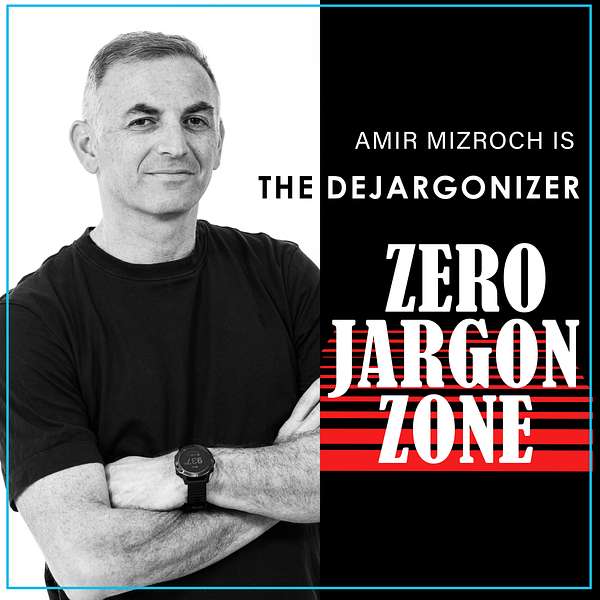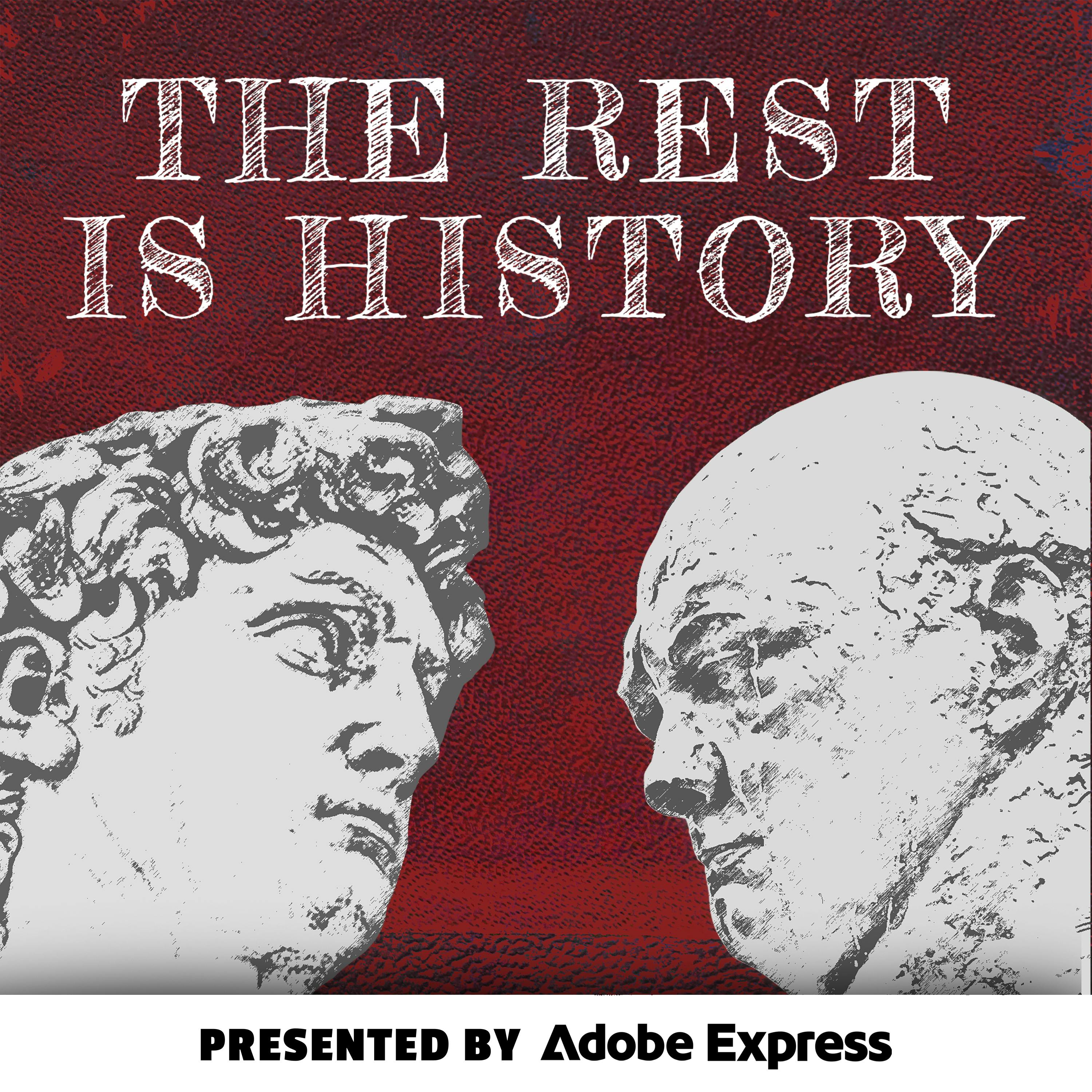
The Dejargonizer
A Deep-Tech Deep-Dive "HARDTalk for Startups" show. From Amir Mizroch, ex EMEA Tech Editor, The Wall Street Journal
The Dejargonizer
Tiny Space Startup Has a Galaxy-Size Vision, Starting With Earth
In this episode, I speak to Alice Miller, VP Space at Helios, a startup that is working on decarbonizing the steel industry, and also plans to make liquid Oxygen propellant on the moon.
Small startup, huge ambitions. Helios could one day be the like BP or Shell of the New Space Age, building a network of liquid oxygen production and distribution to all the space ships and human colonies that need to refuel as they head into deep space.
In the meantime, it's working on making resource extraction far less harmful to the planet, not just iron, but silicon, copper, nickel, lithium and other critical materials.
Today, the steel industry is the second largest polluter on Earth, about 10% of co2 emissions are from the steel industry.
Helios has hit upon a terrestrial application that could revolutionize the steel industry, eliminating 1.7 trillion tons of carbon dioxide emissions per year. It could also make Helios a lot of money.
Alice also talks about the challenges on the way to space, and they are enormous. The cost of putting anything on the moon is currently $1 million per kilo, making it difficult to get investors on board for space projects that won't see a return for 10-15 years.
Some of you may have heard name Alice Miller before but can't place it. Originally from South Africa (where I grew up) Alice was the first woman to successfully sue the Israeli army for the right to enter the vaunted male-only, elite Israel Air Force pilot course. In a culture that regarded risks to women captured by the enemy as unacceptable, they were barred from becoming combat pilots. Alice sued in 1994 and won, opening the gate for a generation of women in the IAF.
So I was not surprised to see Alice as VP Space at Helios, a company that’s aiming to open the door to humankind’s next chapter: commercial space exploration, moon and Mars colonies, and whatever awaits us Sapiens out there in deep space as we attempt to become an interplanetary species.
Join us as we explore the future of space exploration and the potential of Helios to be the BP or Shell of the New Space Age.
Listen
Apple Podcasts, Spotify, or anywhere you get podcasts.
Connect
LinkedIn
Twitter
Newsletter
Email: amir@orangegrovecomms.com
Amir Mizroch: Welcome aboard The Dejargonizer flight 101 to the moon. I'm your captain Amir Mizroch. Our navigator today is Alice Miller, Vice President of Space and a company called Helios. Helios is working on humankind's next chapter. Commercial Space Exploration, Moon and Mars colonies and offworld mining. Listen closely as we piece together this journey through space and time. Hi, Alice, thanks for being on The Dejargonizer.
Alice Miller: Hi, Amir thanks a lot for inviting me.
Amir Mizroch: When it comes to space I feel like for a lot of people and definitely me included space sparks joy and imagination, it sparks my childhood. It sparks what I think about my children and the world that they're gonna grow into and the things that they will see. And I want to make sure that as we're talking about space tech, and there's a new space industry, it's not just governments, it's not just Bezos and Musk. It's also companies that are all across the value chain. And I want to try and tell that story through Helios. So tell me about Helios.
Alice Miller: So Helios is an Israeli startup. We have been here for five years now. We have 27 employees. Generally speaking, we started off as a space company with a mission to produce oxygen out of Regolith on the moon. Regolith is the lunar soil.
Amir Mizroch: What's it called regolith? Who gave it that name?
Alice Miller: Oh, God knows. Good question. But everybody knows, that's what it's called today, you know, which is actually the dust on the moon. Which is very, very similar to many rocks that we have here on Earth.
Amir Mizroch: Moon Dust, that's moon dust.
Alice Miller: Yeah, it's really dusty. And problematic. It's very electrostatic it sticks to everything. It's very abrasive. It ruins everything. You know, it's quite harsh over there. We were developing technology to produce oxygen on the lunar surface, which is going to be a necessity for the human race to be able to move around in what's called cislunar space, which is the area between Earth and the Moon including the moon's surface, and beyond, of course, Mars and whatnot. The first stage is making rapidly reusable rockets. Once we can leave the Earth's atmosphere. The second stage is providing propellant in space. Without this propellant rockets will not be able to reach the moon and carry on flying around the moon. So it's a strategic need.
Amir Mizroch: How does that even begin? Have you tried on spec? Do you know that this works on moon dust?
Alice Miller: So I just want to say that lots of research is being done with samples that have come back from Apollo in the 70s. They found that moon dust says about 40% Oxygen, which is true actually to any rock on any place. Rocks are made up out of metals and minerals. And it's actually metals which are totally bound to oxygen. So you get like iron oxide, silicon oxide, all kinds of oxides. And 40% of the Moon Dust is oxygen.
Amir Mizroch: Hold on, I just want to make sure I understand because the last time I did this, I was 15. Oxide just means that it has oxygen in it, it could be uranium.
Alice Miller: Exactly, exactly. Exactly, exactly. I don't know about uranium oxide. And I'm not a chemist myself. But I know that iron oxide, which is rust, is actually oxygen and iron bound together.
Amir Mizroch: So you know this works because they brought back lunar dust on the Apollo and potentially aliens. And then you know this works. And you have a plant or some sort of factory to make it. Can you tell me how you do it?
Alice Miller: We have a lot of research done on the regolith brought back by the Apollo missions. But of course, nobody can touch that regolith. It's closed up in vaults in NASA somewhere. And you know, you can't really get to that. So what we have on Earth is something called simulants, regolith simulants, which are lab made concoctions of all kinds of oxides put together, made in a specific way that simulate the physical and chemical properties of lunar regolith, this simulant you can buy from many labs around the world cost $30 a kg you know, anybody can buy it.
Amir Mizroch: So this is like fake Moon Dust.
Alice Miller: Fake Moon dust. Exactly.
Amir Mizroch: Synthetic moon dust.
Alice Miller: Yes. To put it that way. Yeah.
Amir Mizroch: And something else that you said it was interesting, just want to go back, you said that the real Moon Dust is kind of locked in a NASA lab somewhere.
Alice Miller: Yeah, in vaults in NASA.
Amir Mizroch: Why?
Alice Miller: I don't know exactly why. I'm sure they want to do research on this moon dust. We don't have a lot of it. They brought back about 400 kilos of this stuff. And when they came back from the Apollo missions, part of it has been dished out to research facilities. They keep it in very, very extremely sterile condition because on the moon, there's no oxygen. So you don't want to expose this to oxygen, you know, it might change its properties, etc. I really have no idea.
Amir Mizroch: This is the beginning of like a space horror movie.
Alice Miller: Anyway, let's go back. But the stimulants we use are very close to what happens on the moon, what we do is we take this simulant we heat it up to a very, very high temperature in which it starts to become molten, to actually melt, it comes into this type of lava. And then we electrolyze it, you know, we put electricity into the mixture. And we actually force the oxygen to separate from its metals. We've done our Lab POC proof of concept. And we're moving on to building a larger scale, like industrial scale system.
Amir Mizroch: And is that eventually this reactor you're hoping to place on the moon to create this? That's the vision? How long do you think that that will take?
Alice Miller: Well, in 2025, we're going to the lunar surface with a lunar lander for what the Japanese company called ispace. They're taking us there. And we're going to take a few grams of regolith, and for the first time in the history of humanity, produce oxygen out of regolith on the lunar surface. But this is just out of a few grams. Yeah. The second system we want to put is going to be a continuous system, where on one side you have a conveyor belt, putting regolith into the system continuously, then we will have continuous production system. And on the other end, we'll have a liquidation system turning the oxygen into liquid oxygen, and that will be supplied to lunar landers on the moon will be supplied to the human habitat. And hopefully the system will be on the moon around 2028-29.
Amir Mizroch: How much of the regolith do you need to make oxygen a lot?
Alice Miller: A lot. If the regolith has 40% oxygen from every kind of regolith, we can make 400 kilos of oxygen. Okay, I'm gonna ask a left field question here. When I look at the space race and the moon, the moon race the race to the moon, part two, it's unclear to me under which auspices will your reactor work? Who's going to protect it? Is it on the western side of the Eastern so do you call when if and when something goes wrong? Your maintenance? I have no idea. There's some it's a very big mess up there. There are all kinds of treaties. There are written between governments. I don't think anybody has in the western world over here has a treaty with China that China signed on. Our goal, in the end is to produce 1000 tons of oxygen on the moon in 2032.
Amir Mizroch: So 1000 tons of oxygen. Is that enough for I don't know how many refueling?
Alice Miller: One starship a month. Plus, we have a fantastic thing that happened to us here at Helios, which is our terrestrial application. We have a terrestrial application, which turns out to be really fundamental in our capability to fund our next 10 or 12 years coming up.
Amir Mizroch: So when you say terrestrial applications, you mean to make oxygen on Earth for Earth?
Alice Miller: Nope. Because making oxygen on Earth for Earth. Right? People know how to do it. No, no, I'm talking about something totally different. We were doing an experiment here in one of our furnaces, and we put some regolith into the simulant into one of these ovens. And every time we did the experiment, we found that we produce more iron than is available in the regolith, itself. When we produce oxygen, we get iron as a byproduct. And we were getting more iron than what was available in the regular. So we broke down the furnace again and again and again and try to understand like, how is this happening. And what we found is that actually the whole oven was coated with some iron oxide in the inside. And something in the oven was actually attacking this iron oxide and separating the oxygen from the iron. And then one of our engineers here said maybe, instead of producing oxygen and getting iron as a byproduct, we can produce iron, and get oxygen as a byproduct. Today, the steel industry is the second largest polluter on Earth, about 10% of co2 emissions are from the steel industry. And why do we get co2 pollution because you take coal, you take iron ore, you mix the two together, you get carbon dioxide, and you get iron. In the technology we developed here, we have managed to produce pure iron, while releasing only oxygen. This terrestrial application that we stumbled upon, is going to on one hand eliminate something like 1.7 trillion tons of carbon dioxide a year. And second thing it's going to do is it's going to be a fantastic way for us to fund our space development in order to reach our goal of 2033.
Amir Mizroch: The company has been around for five years, what are the challenges for you as a head of space?
Alice Miller: A lot of challenges. First of all, there's technological challenges. Number one, you know, it's very, very tough technology to develop. We're working with molten rocks. In a very highly corrosive, oxygen rich environment, the crucible melts the electrodes melt. Now the thing which is very challenging, not only for me, but for any company that's doing anything on the moon. Today, the cost of putting anything on the moon is $1 million per kilo $1 million per kilo. That means that if we want to do an experiment on the moon, even before we do any r&d, any research, any development anything, we have to pay a few million dollars just to get our payload there. It's very hard to get people to invest in space projects that are going to be ripe in 15 1015 years time.
Amir Mizroch: It sounds like you're a space infrastructure company, a space propellant maker.
Alice Miller: That's very true. If you really look deep into the future, there is going to be a lot of movement up there. But undoubtably controlling the oxygen production on the lunar surface can be extremely lucrative 1015 years downstream.
Amir Mizroch: I guess. Helios is kind of the BP the shell of the space age.
Alice Miller: Well, right now Helios is a startup with 27 workers. We have a bit of way to go. But yeah, As somebody is going to have to make this happen.
Amir Mizroch: Well, I was I was hoping that you would say that you know, your true believer and you believe Musk when he says we need to become a multiplanetary species,
Alice Miller: I think it's more like unstoppable human exploration bug, you know, they just can't stop. Sometimes you really want to understand why you're doing what you're doing. And it's even hard to explain to yourself what why they want to be, you know, when you lie down under the stars, you just look up, everything is so beautiful. He really want to know, you know, what it's all about, and what's over there, and what's beyond what's over there. And you really want to check it out and see if it's possible and go there and do it. Can't stop that natural feeling that we have.
Amir Mizroch: And I couldn't think of a better vibe and definition of what a VP space is. I love to having you on. Alice Miller VP space at Helios, thank you very, very much for being on the show.
Alice Miller: Pleasure. Thank you very much. I hope I didn't make it too complicated because you know, it is complicated.





